Outdoor Track and Field on Flotrack 2013Apr 9, 2013 by Mitch Kastoff
The Arcadia Invitational and the Running Renaissance
The Arcadia Invitational and the Running Renaissance
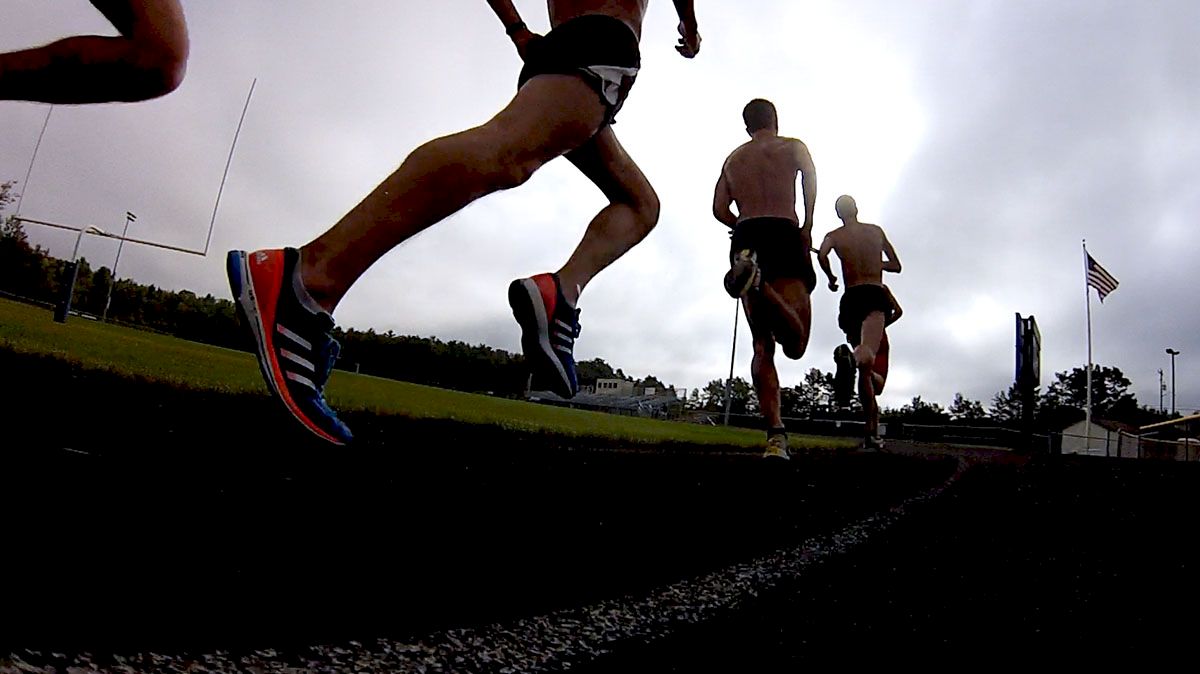
Eighteen boys broke nine minutes for 3200m at the Arcadia Invitational.
Eighteen.
But what’s really astounding about the amount of elite marks from Arcadia? What’s the frame of reference for eighteen?
The sheer number is impressive in its own right. But the history behind the two mile and the recent shift in high school distance running makes Arcadia even more mind-blowing.
I used to think we were amidst a running renaissance. Now it seems we’ve entered the start of the Golden Age.
Before we get too romantic over here with enlightened ideas, let’s try to remember the days when saying eighteen high school boys broke 9:00 at single meet would have made us seem like a time traveler from 1985.
It’s important to remember our humble beginnings as runners. We’re so amazed by records and titles that slowly but surely, we’ve become immune to their humbling effects.
Kurt Vonnegut said, “I urge you to please notice when you are happy, and exclaim or murmur or think at some point, ‘If this isn’t nice, I don’t know what is.” Replace “you are happy” with “a record” and “nice” with “awesome” and we’re starting to build a base for historical perspective.
Take, for example, Steve Jobs unveiling the iPhone back in 2007. At one point, he zooms in on a picture and crowd breaks into oohs and aahs. Zoom in on a picture on the iPhone today and you’ll get an encouraging pat on the back for having the same technological prowess as a six year old.
Sorry, I digress. Why are we no longer impressed by the iPhone? Why are we no longer oohing and aahing for eighteen sub-9s in a single meet?
It’s because we’ve become accustomed to those things. They’re commonplace. But right now, in the present day, high school distance running is deeper than ever before.
Let’s start small and build our way to the eventual macro answer.
18 is new Arcadia Record for most sub-9 marks
It’s funny how quickly the title of “Greatest of All-Time” is erased from Arcadia’s history. First, the 2010 invitational was labeled as such. Then, 2012 contended for the name. Now, it’s 2013.
Arcadia’s 3200m hype has grown so quickly in the last few years that it’s hard to tell if the record of eighteen will remain for another year. In the slimmest of margins, this year’s crew broke the previous record of 16 set in both 2012 and 2010 (though some articles cited seventeen in 2010, but I can’t find the missing mark).
But there has to be some kind of Law of Diminishing Arcadia Returns, right? The actual Law of Diminishing Returns states that, “adding one factor of production, while holding all others constant, will at some point yield lower returns.”
If more athletes are drawn to Arcadia for its mystique and fanfare, will there be an eventual decrease in performance?
At some point, we’ll revert back to the norm, right? Where “elite status” isn’t handed out like participation ribbons?
Or maybe, we haven't reached peak performance yet. Maybe we’re at a new plateau. Even still, maybe we’re still ascending.
18 is more sub-9 marks than an entire decade’s worth
First, a parable (I promise it’ll have a conclusion). Back in the summer of ’11, I had just graduated from college, was in a bit of a limbo period, and was still occasionally browsing Dyestat. On one particular day, I came across a topic titled, “Running Renaissance.” In the thread, user "Kalaby" had used Jack Sheperd's Track and Field News High School Annuals to compile the number of high school boys who had broken 4:10 and 9:10 for the mile and two mile, respectively.
There were a few obvious takeaways. The ‘70s were fantastic, the ‘90s never happened (in our mind), and the ‘00s were unbelievable.
Bored, in-between undergrad and graduate school, and unemployed at the time (like no other college graduate with a liberal arts or education degree), I wondered who were behind those numbers.
I sent Kalaby (real name Mike) a message on how he compiled the data and he messaged me back forty-one years of digitized Track and Field magazines. For someone that loves old school running stuff, this was the jackpot.
With much thanks, I took the list, recorded some of the legible names from each year (still incomplete due to time), and displayed the information graphically because if there’s one thing that people love, it’s colored coded displays of data.

Graphing number of sub 4:10 milers and sub 9:00 two milers. Sorry for the lack of labels.
Even without the upward sloping lines, the trend is pretty clear. But the real question is why is this happening? Why now and why in such a large volume?
For a college graduate with too much free time (idle hands are the internet’s playground) and too much curiosity, I was about to open a Pandora’s Box of that had thankfully been answered by two sources.
The first was Jonathan Beverly’s incredible piece for Running Times titled “Born at the Right Time.” Beverly explains that if you “overlay the data with ‘generational’ divisions... this new generation is rewriting running history.”
Beverly examines the “societal shift” both in terms of culture and actual training. In short, the current generation is experiencing a “running renaissance.” The ‘00s was a rebirth from the ‘60s and ‘70s, but it went beyond a return to form. It was more than that; we as a generation had surpassed historical expectations.
In the article was yet another rabbit hole of information. Beverly had linked an earlier article from the Minnesota running blog Down the Backstretch that was also aptly titled “The Reasons Behind the Running Renaissance.” The author, Stephen Paske, used the “microcosm” of the Minnesota running community to arrive at the same conclusion as Beverly.
The ‘00s was a renaissance period, but the pivotal year was ’98. From then on, there was no looking back to the Dark Ages. But why ’98?
Both authors cite two major examples: Jack Daniels published his running formula and the creation of John Dye’s legendary and recently revived website, Dyestat.
The combination of new information and a vehicle to disperse it to far reaches of the U.S. had an incredible impact that still reverberates today. Beverly wrote that, “Daniels’ Running Formula, published in 1998, ‘made the science of the sport accessible to any high school coach who cares.’” Paske also exalted the Internet as the tool for the acceleration of this change. More invaluable information was more readily accessible.
In a weird twist of fate, there was one more sign in this web of authors. That fall, after I had shelved the projected, I met Chris Lear in New York City. I had met Lear, the author of Running with the Buffaloes and Sub-4, a year prior, but actually had a question for him that didn’t start and end with, “Can you autograph my book?”
I asked Lear what he thought on the Renaissance and if it should be further explored. Lear’s response, almost verbatim to Beverly’s, was that the project had merit. So I continued on gathering data, reading sociological and physiological texts, and making cold calls to guys from the ‘60s.
Then I started grad school, got a job, and shelved the project again.
I think of picking it up every now and then. I recently emailed Charlie Mahler at Down the Backstretch to talk to Paske, but haven’t followed through.
Then Arcadia happened and here I am, again.
Before I quit, I had thought this this upward trend would continue. Last year isn’t included on the graph, but would you care to guess the results?
# of sub-4:10 milers (1600m): 43
# of sub-9:10 two miles (3200m): 27
I went out on a limb to think that there’d be more athletes dipping under those barriers last year, but not that many. Not at that rate.
So if we look at the projected rate for this year, what conclusions can we draw? If we use the Arcadia Invitational as another “microcosm,” then there’s a few takeaways.
There were more sub-9 two mile marks than all of the ‘90s. From 1990 to 1999, only seventeen high school boys broke 9:00 in the two mile. That’s even counting the “turning point” year of ’99.
But the phrase “turning point” brings us to the end (or maybe the beginning of something more) of the discussion. Similar to the European Renaissance, the Running Renaissance has had pivotal moments, but no definitive “eureka” moments.
While Daniels and Dye’s work was well-timed and the vital to the last thirteen or so years, the last decade has been progressively building off those ideas. The slope of the line of success hasn't become stagnant, yet.
The timeline European Renaissance doesn’t have anyreal absolutely singular defining moments (Edit: I mean in the sense that there's no singular turning point. Instead, everything is important; some more than others). Rather, the period between the 14th and 17th century was marked by different movements. There’s no singular date that explains the Renaissance, but a vast timeline of historical change.
There are certainly parallels. I’d consider the advent of Dyestat to be our Gutenberg Press. Training philosophies and coaching advice was more available due to the Internet just as the printing press let the masses read texts. That’s where the comparison ends.
Even still, are we still in a “renaissance?” We’ve returned to the ideas and success of previous generations, but high school athletes have gone far beyond those barriers.
Just as the Renaissance brought the ideas of the Enlightenment, we’ve entered a generation of unknowns. It’s no longer a period of rebirth, but the most successful period of high school distance running of all-time.
This year and the next "X" amount of years, how much higher will that graph climb?
It’s no longer a transitional period. This is the Golden Age of distance running.
Eighteen kids at the Arcadia Invitational may just be the beginning.
Eighteen.
But what’s really astounding about the amount of elite marks from Arcadia? What’s the frame of reference for eighteen?
The sheer number is impressive in its own right. But the history behind the two mile and the recent shift in high school distance running makes Arcadia even more mind-blowing.
I used to think we were amidst a running renaissance. Now it seems we’ve entered the start of the Golden Age.
Before we get too romantic over here with enlightened ideas, let’s try to remember the days when saying eighteen high school boys broke 9:00 at single meet would have made us seem like a time traveler from 1985.
It’s important to remember our humble beginnings as runners. We’re so amazed by records and titles that slowly but surely, we’ve become immune to their humbling effects.
Kurt Vonnegut said, “I urge you to please notice when you are happy, and exclaim or murmur or think at some point, ‘If this isn’t nice, I don’t know what is.” Replace “you are happy” with “a record” and “nice” with “awesome” and we’re starting to build a base for historical perspective.
Take, for example, Steve Jobs unveiling the iPhone back in 2007. At one point, he zooms in on a picture and crowd breaks into oohs and aahs. Zoom in on a picture on the iPhone today and you’ll get an encouraging pat on the back for having the same technological prowess as a six year old.
Sorry, I digress. Why are we no longer impressed by the iPhone? Why are we no longer oohing and aahing for eighteen sub-9s in a single meet?
It’s because we’ve become accustomed to those things. They’re commonplace. But right now, in the present day, high school distance running is deeper than ever before.
Let’s start small and build our way to the eventual macro answer.
18 is new Arcadia Record for most sub-9 marks
It’s funny how quickly the title of “Greatest of All-Time” is erased from Arcadia’s history. First, the 2010 invitational was labeled as such. Then, 2012 contended for the name. Now, it’s 2013.
Arcadia’s 3200m hype has grown so quickly in the last few years that it’s hard to tell if the record of eighteen will remain for another year. In the slimmest of margins, this year’s crew broke the previous record of 16 set in both 2012 and 2010 (though some articles cited seventeen in 2010, but I can’t find the missing mark).
|
Year |
# of sub-9s |
|
2013 |
18 |
|
2012 |
16 |
|
2011 |
10 |
|
2010 |
16 |
|
2009 |
3 |
|
2008 |
3 |
|
2007 |
0 |
|
2006 |
7 |
|
2005 |
1 |
|
2004 |
6 |
|
2003 |
11 |
|
2002 |
6 |
But there has to be some kind of Law of Diminishing Arcadia Returns, right? The actual Law of Diminishing Returns states that, “adding one factor of production, while holding all others constant, will at some point yield lower returns.”
If more athletes are drawn to Arcadia for its mystique and fanfare, will there be an eventual decrease in performance?
At some point, we’ll revert back to the norm, right? Where “elite status” isn’t handed out like participation ribbons?
Or maybe, we haven't reached peak performance yet. Maybe we’re at a new plateau. Even still, maybe we’re still ascending.
18 is more sub-9 marks than an entire decade’s worth
@runliao I remember in 1999 when i raced the invitational 3200 only one person broke 9:00 and that was Adam Tenforde. #arcadiainvite
— Fernando Cabada (@FernandoCabada) April 7, 2013
@therealmerb @fernandocabada Absolutely. Dyestat/Flotrack/Letsrun have been huge with disseminating info about training and competition.
— Kevin Liao (@RunLiao) April 7, 2013
First, a parable (I promise it’ll have a conclusion). Back in the summer of ’11, I had just graduated from college, was in a bit of a limbo period, and was still occasionally browsing Dyestat. On one particular day, I came across a topic titled, “Running Renaissance.” In the thread, user "Kalaby" had used Jack Sheperd's Track and Field News High School Annuals to compile the number of high school boys who had broken 4:10 and 9:10 for the mile and two mile, respectively.
There were a few obvious takeaways. The ‘70s were fantastic, the ‘90s never happened (in our mind), and the ‘00s were unbelievable.
Bored, in-between undergrad and graduate school, and unemployed at the time (like no other college graduate with a liberal arts or education degree), I wondered who were behind those numbers.
I sent Kalaby (real name Mike) a message on how he compiled the data and he messaged me back forty-one years of digitized Track and Field magazines. For someone that loves old school running stuff, this was the jackpot.
With much thanks, I took the list, recorded some of the legible names from each year (still incomplete due to time), and displayed the information graphically because if there’s one thing that people love, it’s colored coded displays of data.

Graphing number of sub 4:10 milers and sub 9:00 two milers. Sorry for the lack of labels.
Even without the upward sloping lines, the trend is pretty clear. But the real question is why is this happening? Why now and why in such a large volume?
For a college graduate with too much free time (idle hands are the internet’s playground) and too much curiosity, I was about to open a Pandora’s Box of that had thankfully been answered by two sources.
The first was Jonathan Beverly’s incredible piece for Running Times titled “Born at the Right Time.” Beverly explains that if you “overlay the data with ‘generational’ divisions... this new generation is rewriting running history.”
Beverly examines the “societal shift” both in terms of culture and actual training. In short, the current generation is experiencing a “running renaissance.” The ‘00s was a rebirth from the ‘60s and ‘70s, but it went beyond a return to form. It was more than that; we as a generation had surpassed historical expectations.
In the article was yet another rabbit hole of information. Beverly had linked an earlier article from the Minnesota running blog Down the Backstretch that was also aptly titled “The Reasons Behind the Running Renaissance.” The author, Stephen Paske, used the “microcosm” of the Minnesota running community to arrive at the same conclusion as Beverly.
The ‘00s was a renaissance period, but the pivotal year was ’98. From then on, there was no looking back to the Dark Ages. But why ’98?
Both authors cite two major examples: Jack Daniels published his running formula and the creation of John Dye’s legendary and recently revived website, Dyestat.
The combination of new information and a vehicle to disperse it to far reaches of the U.S. had an incredible impact that still reverberates today. Beverly wrote that, “Daniels’ Running Formula, published in 1998, ‘made the science of the sport accessible to any high school coach who cares.’” Paske also exalted the Internet as the tool for the acceleration of this change. More invaluable information was more readily accessible.
In a weird twist of fate, there was one more sign in this web of authors. That fall, after I had shelved the projected, I met Chris Lear in New York City. I had met Lear, the author of Running with the Buffaloes and Sub-4, a year prior, but actually had a question for him that didn’t start and end with, “Can you autograph my book?”
I asked Lear what he thought on the Renaissance and if it should be further explored. Lear’s response, almost verbatim to Beverly’s, was that the project had merit. So I continued on gathering data, reading sociological and physiological texts, and making cold calls to guys from the ‘60s.
Then I started grad school, got a job, and shelved the project again.
I think of picking it up every now and then. I recently emailed Charlie Mahler at Down the Backstretch to talk to Paske, but haven’t followed through.
Then Arcadia happened and here I am, again.
Before I quit, I had thought this this upward trend would continue. Last year isn’t included on the graph, but would you care to guess the results?
# of sub-4:10 milers (1600m): 43
# of sub-9:10 two miles (3200m): 27
I went out on a limb to think that there’d be more athletes dipping under those barriers last year, but not that many. Not at that rate.
So if we look at the projected rate for this year, what conclusions can we draw? If we use the Arcadia Invitational as another “microcosm,” then there’s a few takeaways.
There were more sub-9 two mile marks than all of the ‘90s. From 1990 to 1999, only seventeen high school boys broke 9:00 in the two mile. That’s even counting the “turning point” year of ’99.
But the phrase “turning point” brings us to the end (or maybe the beginning of something more) of the discussion. Similar to the European Renaissance, the Running Renaissance has had pivotal moments, but no definitive “eureka” moments.
While Daniels and Dye’s work was well-timed and the vital to the last thirteen or so years, the last decade has been progressively building off those ideas. The slope of the line of success hasn't become stagnant, yet.
The timeline European Renaissance doesn’t have any
There are certainly parallels. I’d consider the advent of Dyestat to be our Gutenberg Press. Training philosophies and coaching advice was more available due to the Internet just as the printing press let the masses read texts. That’s where the comparison ends.
Even still, are we still in a “renaissance?” We’ve returned to the ideas and success of previous generations, but high school athletes have gone far beyond those barriers.
Just as the Renaissance brought the ideas of the Enlightenment, we’ve entered a generation of unknowns. It’s no longer a period of rebirth, but the most successful period of high school distance running of all-time.
This year and the next "X" amount of years, how much higher will that graph climb?
It’s no longer a transitional period. This is the Golden Age of distance running.
Eighteen kids at the Arcadia Invitational may just be the beginning.
Related Content
 Replay: Fresno State Invitational | Apr 27 @ 7 PM
Replay: Fresno State Invitational | Apr 27 @ 7 PMApr 28, 2024
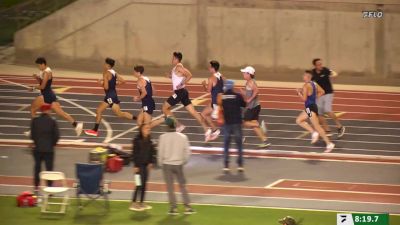 Men's 5k, Finals 1
Men's 5k, Finals 1Apr 28, 2024
 Men's 5k, Finals 1
Men's 5k, Finals 1Apr 28, 2024
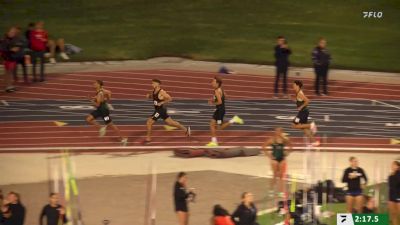 Men's 1500m Invitational, Finals 1
Men's 1500m Invitational, Finals 1Apr 28, 2024
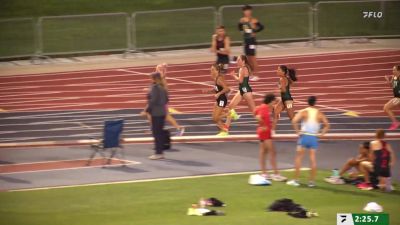 Women's 1500m Invitational, Finals 1
Women's 1500m Invitational, Finals 1Apr 28, 2024
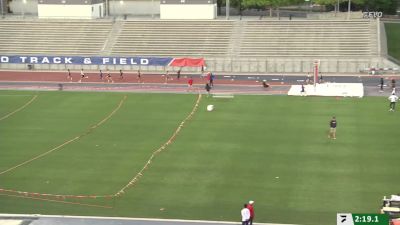 Men's 1500m, Finals 2
Men's 1500m, Finals 2Apr 28, 2024
 Men's 1500m, Finals 1
Men's 1500m, Finals 1Apr 28, 2024
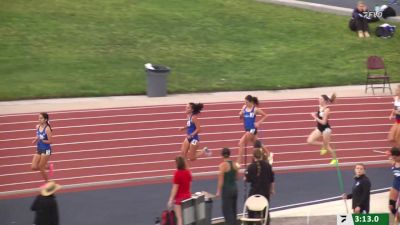 Women's 1500m, Finals 3
Women's 1500m, Finals 3Apr 28, 2024
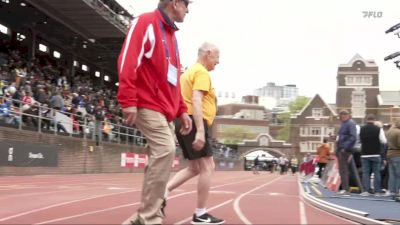 Replay: Penn Relays presented by Toyota | Apr 27 @ 7 AM
Replay: Penn Relays presented by Toyota | Apr 27 @ 7 AMApr 28, 2024